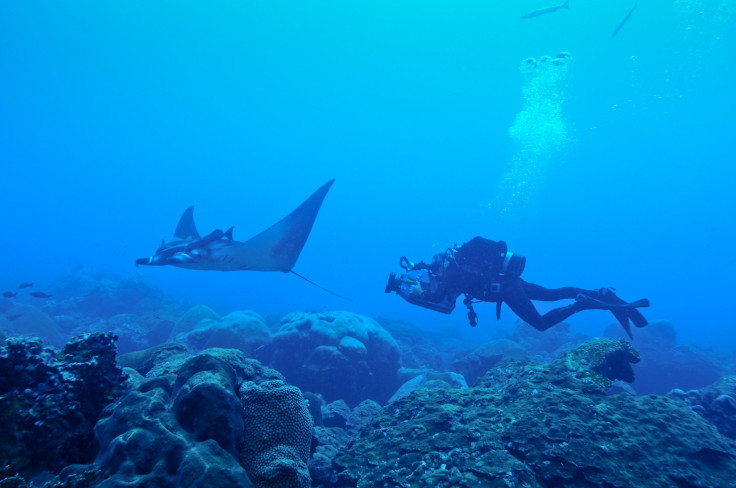World’s First-Known Manta Ray Nursery Found In Northwestern Gulf Of Mexico

Populations of manta rays usually aggregate far from coastal areas, making the gentle giants of the sea hard to study, and even lesser is known about juveniles of the species. But a PhD candidate from the Scripps Institution of Oceanography at the University of California, San Diego, has discovered the first nursery of manta rays in the world.
Joshua Stewart, a graduate student of marine biology at the university, and colleagues from the Office of National Marine Sanctuaries of the National Oceanic and Atmospheric Administration made the discovery after Stewart first spotted a juvenile manta in 2016 at the Flower Garden Banks National Marine Sanctuary in northwestern Gulf of Mexico. It is one of 15 protected areas according to federal designation of marine sanctuaries.
“The juvenile life stage for oceanic mantas has been a bit of a black box for us, since we’re so rarely able to observe them,” Stewart, who also serves as executive director of the Manta Trust, a global manta conservation program, said in a statement Monday. “Identifying this area as a nursery highlights its importance for conservation and management, but it also gives us the opportunity to focus on the juveniles and learn about them. This discovery is a major advancement in our understanding of the species and the importance of different habitats throughout their lives.”
Stewart had seen several adult manta rays in the wild before seeing his first juvenile in Flower Garden Banks, following which he enlisted the support of the sanctuary staff to analyze 25 years of data collected from research dives. They looked at dive logs and photographs to identify individuals, who can be told apart by distinctive spot patterns on their undersides, which are unique like human fingerprints or cow muzzles.
The researchers concluded about 95 percent of all individuals visiting the marine sanctuary were juveniles, whose wingspan measured an average 2.25 meters (7.38 feet). As adults, it can grow up to 7 meters (23 feet, about the same length as a giraffe’s height).
“This is exciting news for the manta rays in the northwestern Gulf of Mexico. The understanding that the mantas are utilizing the Flower Garden Banks National Marine Sanctuary, and possibly other reefs and banks in the region, as a nursery has increased the value of this habitat for their existence,” George P. Schmahl, superintendent of Flower Garden Banks National Marine Sanctuary, said in the statement.

The sanctuary is about 100 miles south of Texas, and researchers theorize the juvenile manta rays congregate there to warm their bodies after visiting the cold, deep waters off the continental slope. Those deep waters are home to some zooplankton that are favored food for the mantas. Since the northern parts of the Gulf of Mexico is also inhabited by several large species of sharks, it would be risky for juveniles to bask near the water’s surface. To confirm their theories, researchers are planning to tag some of the juveniles to track their diving patterns and movements.
Manta rays were included in the U.S. Endangered Species Act on Jan. 22, where they are listed as threatened, while they are classified as vulnerable in the International Union for the Conservation of Nature’s Red List of Threatened Species.
The researchers published a paper titled “Important juvenile manta ray habitat at Flower Garden Banks National Marine Sanctuary in the northwestern Gulf of Mexico,” which appeared online Friday in the journal Marine Biology.
© Copyright IBTimes 2025. All rights reserved.





















